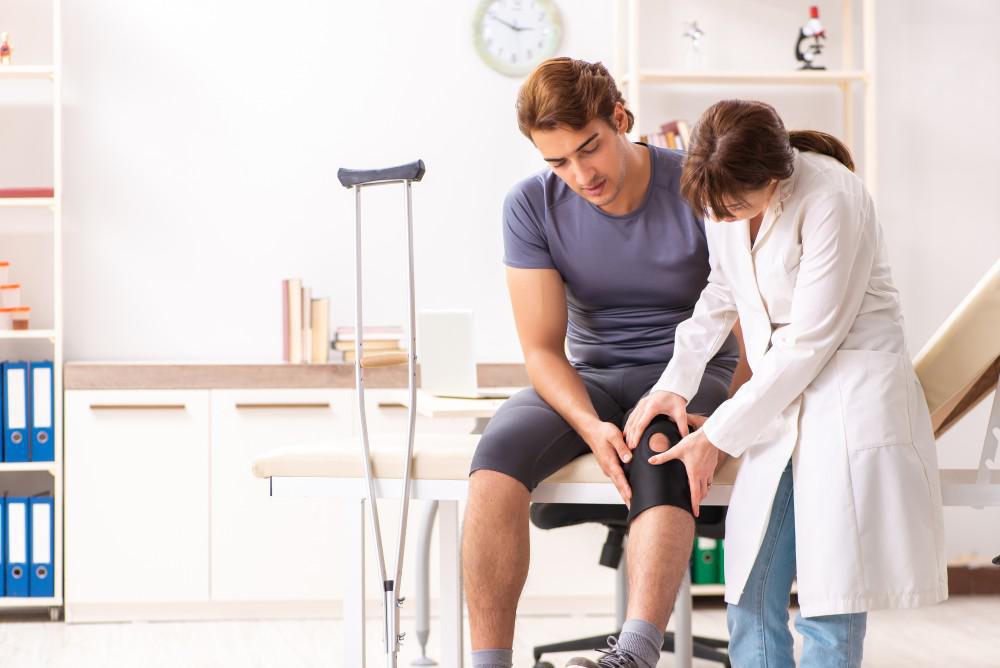Odense: MENITCAL tears are a common injury where strong rotates cause certain networks on the knee crying. The world’s first study compares the treatment of surgical and non-surgicality of mildew tears in young people showing that patient education and education provide similar results as operations.
Researchers from the University of Southern Denmark (SDU) and a number of orthopedic departments at Denmark Hospital conducted research that compares the training and education of patients versus milding injury surgery between 121 young people.
This research was published in ‘Nejm Proof’. In the United States alone, one million operations are carried out every year in a knee injury, and surgery is the preferred treatment in most parts of the world for a knee injury In this study, the researchers showed that young people with a torn of meniscal which initially underwent surgery did not achieve superior results compared to young people who began with sports and education, with the next operating option.
“Diamcal tears are a frequent knee injury and until now it is not yet known how the effects of operation and sports compared to young people. Knee injuries can have great consequences both in the short and long term. Therefore it is important that we now know there are some treatments that are Effective to be chosen, “said Soren T. Skou, professor in the research unit for musculoskeletal and physiotherapy functions in SDU and research heads at Progrez at the hospital Naestriz, Slagelse and Ringsted In the short term, mental injuries are often considered absence of work or studies. The study also shows that if someone has an anterior plant ligament or meniskal tears, one facing 50 percent risk of osteoarthritis 10-15 years later, and only half of patients can return to play sports at the same level as before.
Therefore it is important that patients receive the best care for them. As mentioned, this might involve targeted exercises and / or operations “Changing established care is difficult, and surgery is usually a treatment for meniskal tears. We hope our studies can make patients and doctors, both GPS and orthopedic surgeons, realize that there are some possible treatments,” Jonas B. Thorlund said Professor and head of research in the research unit for musculoskeletal and physiotherapy functions and part of the research unit for general practices in SDU.
Orthopedic Surgeons from Amager-Hvidovre Hospital, Aarhus University Hospital, Aalborg University Hospital, Lillaelt Hospital, Silkeborg Regional Hospital, Naestved Hospital and Odense Hospital participated in this study One of them is per Holmich, Professor and Head of Sorc-C (Sports Orthopedic Research Center-Copenhagen) unit in the Department of Orthopedic Surgery, Amager-Hvidovre Hospital. “This is an interesting and interesting finding that among young patients with dazziscal tears, some are fine without surgery,” he said.
As with many diseases and other injuries, choosing the right treatment for individual patients often goes down to various factors. With this study, we have shown that surgery is still a significant treatment choice for many of these patients, but that the decision to carry out operations or is not always an unexpected conclusion. There is a basis for further study so that we can offer more individual care. “
The researchers behind the current study will work to disseminate knowledge from studies through courses, materials intended for professionals and health care patients, and introduce them to future clinical guidelines to ensure that it benefits as much as possible.
“We continued our research in this field and is currently investigating whether the scan of MRI patients two years after the mental injury will allow us to see signs of osteoarthritis and whether there is a difference between the scanning of those who have undergone surgery and those who have undergone surgery and them Has completed the training program. Our aim is to be able to show whether one or other treatment is better in preventing osteoarthritis later on, “Soren T. Skou said.

